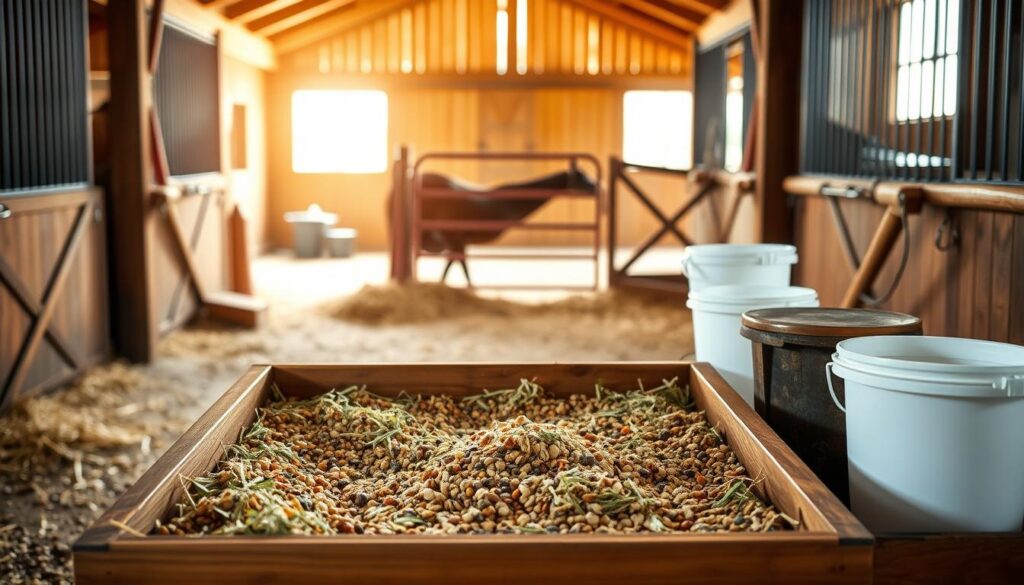Did you know that boarding facilities prioritizing quality hay over concentrates can reduce feed costs by up to 30% while improving digestive health? Proper dietary planning isn’t just about filling troughs—it’s a science tailored to each animal’s needs. With over 70% of equine health issues linked to poor feeding practices, understanding individualized care is non-negotiable.
Every equine companion has unique requirements shaped by age, activity level, and metabolism. A senior trail partner, for example, needs vastly different fuel than a young competition prospect. This is where high-grade forage becomes the cornerstone of smart barn management—it supports gut function and minimizes reliance on pricey supplements.
Facilities that master feedroom organization see fewer colic cases and happier herds. Simple strategies like timed meals and clean water access prevent stress-related behaviors. The best programs also factor in seasonal adjustments, ensuring energy levels stay consistent through Canada’s temperature swings.
In this guide, we’ll break down how to evaluate hay quality, balance budgets without cutting corners, and design feeding schedules that work for 20 or 200 stalls. Whether you’re a first-time owner or a seasoned barn manager, these insights will help your equine partners thrive.
Key Takeaways
- Individualized feeding plans prevent health issues and optimize performance
- Premium hay reduces supplement costs by up to one-third
- Consistent water access decreases colic risks significantly
- Structured meal timing supports natural grazing behaviors
- Seasonal adjustments maintain energy levels year-round
Building a Foundation with Quality Forage
High-quality forage isn’t just feed—it’s the bedrock of every thriving equine diet. Choosing the right type supports digestive health, reduces supplemental costs, and meets 60-80% of daily energy needs. Let’s explore how to spot premium hay and make smart choices between grass and alfalfa varieties.
Understanding Hay Quality Indicators
Top-tier hay feels soft, smells like fresh-cut fields, and shows vibrant green hues. Avoid bales with gray tints, musty odors, or visible mold—these signal poor storage or aging. Leafy stems indicate higher digestible energy, while weeds or debris suggest rushed harvesting.
Staff trained in hay evaluation can spot subtle differences. They check for dust levels by shaking flakes and monitor protein content through lab tests. Pro tip: Crude protein in good grass hay ranges from 8-12%, meeting most maintenance needs without excess calories.
Comparing Grass and Alfalfa Forage
Grass hay’s balanced calcium-phosphorus ratio (1.5:1) makes it ideal for routine feeding programs. Alfalfa packs double the protein (15-20%) but risks mineral imbalances if overused. Mixing both types creates flexibility—use alfalfa sparingly for growing animals or high-performance feeds.
Costs vary regionally across Canada. Grass hay often runs 30% cheaper than alfalfa, but mixed bales offer middle-ground pricing. Always match forage to individual energy needs—senior companions thrive on easy-chew grasses, while active stock may benefit from controlled alfalfa portions.
Balanced Feeding Management for Optimal Equine Health
Proper feeding routines do more than fill bellies—they shape long-term vitality. Strategic management turns mealtimes into opportunities for digestive harmony and peak performance. Let’s explore how timing, ingredient selection, and hydration work together like gears in a well-oiled machine.

Creating a Regular Feeding Schedule
Mimicking natural grazing patterns keeps digestive systems humming. Split daily rations into 3-5 smaller meals spaced evenly through the day. This approach:
- Reduces colic risk by 40% compared to two large feedings
- Curbs stable vices like cribbing through constant forage access
- Maintains steady insulin levels for calmer behavior
“Consistency is key—animals thrive when their internal clocks know when to expect fuel,” notes Alberta-based barn manager Claire Ducharme. Her team uses sunrise/sunset as anchor points for summer/winter adjustments.
Selecting the Right Concentrates
Choose supplements that boost your base forage without overpowering it. Low-NSC grains (
| Forage Type | Ideal Concentrate | Daily Limit |
|---|---|---|
| Straight alfalfa | Oats | 2 lbs |
| Mixed hay | Barley | 4 lbs |
| Grass hay | Rice bran | 1.5 lbs |
Ensuring Clean, Fresh Water Availability
Dehydration triggers more emergencies than feed shortages. Install heated troughs in Canadian winters and scrub buckets weekly. Add free-choice salt licks—they encourage drinking while replenishing electrolytes lost through sweat.
Monitor intake: healthy adults drink 5-10 gallons daily. Sudden changes signal health issues. Pair water access with shaded areas during heat waves to prevent overheating during meals.
Implementing horse nutrition boarding Programs
How do you fuel a herd with different energy needs without breaking the bank? Smart barn managers start by treating each animal like a unique engine—some idle, others race. Body condition scoring (1-9 scale) reveals who needs more oats and who’s cruising on cruise control.
Calorie Calculations Made Simple
Assess three factors: workload, age, and current body score. Light work? Aim for 15-20 calories per pound daily. Senior companions often need easily digestible grain mixes with added joint support. Transition diets slowly—swap 25% of old feed for new every 3 days to avoid digestive fireworks.
Limited turnout demands careful grain selection. High NSC (non-structural carbohydrate) types like barley can turn stalled animals into ping-pong balls. Opt for low-NSC options:
| Grain Type | NSC Content | Cost Level |
|---|---|---|
| Oats | Moderate | $$ |
| Beet pulp | Low | $ |
| Corn | High | $ |
Turnout Time vs. Feed Strategy
For paddock-restricted herds, cut calories by 15% but maintain protein (10-12% crude). Use slow-feed hay nets to mimic grazing—they reduce boredom and hoof-stomping. “We’ve seen fewer stall-weaving incidents since switching to timed feeders,” shares Ontario stable owner Marco Li.
Weekly condition checks prevent overfeeding. Run hands over ribs—you should feel them like speed bumps under a light blanket. Always ensure water stations are ice-free in winter and shaded in summer. Pro tip: Add apple slices to troughs to encourage hydration in picky drinkers.
Tailoring Diets to Individual Equine Needs
Imagine a tool that transforms guesswork into precision—body condition scoring does exactly that. This hands-on method helps staff create diets as unique as each animal’s personality. By tracking subtle changes, keepers can adjust meals before minor issues become major concerns.

Mastering the Condition Scale
The 1-9 scoring system works like a wellness report card. Run your hands along the ribs: ideal scores (4-6) feel like corduroy under a light blanket. “Scoring takes 90 seconds but prevents weeks of corrective feeding,” shares Manitoba barn supervisor Leah Torres. Her team logs results monthly to spot trends.
Hard keepers (score 3 or below) often need calorie boosts through soaked beet pulp or rice bran. Easy keepers (score 7+) thrive on measured grass hay portions. Always pair adjustments with vitamins and minerals—a balanced diet prevents nutrient gaps during changes.
Practical tips for busy staff:
- Post scoring charts in feed rooms
- Use weight tapes weekly
- Photograph each animal’s profile quarterly
Supplements should target specific needs. Senior companions benefit from joint-support formulas, while performance animals may require electrolyte blends. Remember: diet tweaks work best when gradual. Shift feed ratios by 10% every 3-4 days to keep digestive systems happy.
Effective Feedroom Strategies and Feed Organization
A well-organized feedroom is the engine room of any thriving equine operation. Smart storage solutions and strategic planning turn chaos into efficiency, ensuring every horse receives precise meals while reducing staff stress. Let’s explore how modern boarding barn managers are revolutionizing their feed storage game.
Managing Diverse Feed Supplies
Limit base concentrates to three types: maintenance, performance, and ration balancers. This approach cuts clutter by 60% in most boarding facilities while covering all dietary needs. Labeled bins with scoop holders prevent mix-ups—color-code lids for visual learners.
Ontario nutritionist Dr. Ellen Tamm suggests:
“Two universal feeds plus targeted supplements handle 90% of cases better than six specialty mixes.”
Her team uses airtight containers on wheeled carts for fast restocking. Rotate stock weekly using the “first in, first out” rule to avoid spoilage.
Integrating Ration Balancers and Supplements
These concentrated powerhouses deliver nutrients without bulk. A single balancer can replace multiple grain types in feeding horses with different needs. Store supplements alphabetically in clear bins—staff spot needed items in seconds.
Practical tips for busy boarding barn teams:
- Pre-measure morning supplements at closing
- Use wall-mounted whiteboards for individual instructions
- Install haynets with quick-release clips near stalls
Proper horse care demands this precision. When British Columbia’s Rocking R Ranch streamlined their feedroom, medication errors dropped 75%. Their secret? Dedicated zones for hay, concentrates, and supplements—with checklists at every station.
Adapting Feed Programs for Diverse Horse Populations
Managing a mixed herd’s dietary requirements feels like conducting an orchestra—every section needs precise timing and harmony. Facilities housing athletes, retirees, and everything in between require feeding programs that flex like well-tuned suspension systems. The secret? Strategic combinations of foundational fuels and specialized additives.
Mastering the Feed Mix Equation
Performance animals often need 30% more calories than leisure companions. But doubling grain portions risks digestive fireworks. Instead, pair type hay with targeted concentrates—think alfalfa for powerhouses and timothy for easy keepers. Saskatchewan barn manager Yvette Cho shares:
“We use beet pulp soaked in electrolyte water for our eventing team—it’s like giving them premium gasoline.”
Regional approaches matter in Canada. Facilities near Alberta’s foothills often blend local grass hay with flaxseed for omega-3 boosts. Coastal operations might add seaweed-based vitamins minerals to counter iodine-poor soils. Always test hay quality before building menus.
| Activity Level | Base Feed | Supplement |
|---|---|---|
| Competition | Alfalfa/Oats Mix | Electrolyte Pellets |
| Light Work | Timothy Hay | Balancer |
| Retired | Senior Formula | Joint Support |
Weekly body scoring sessions help staff spot changing horse needs. Adjust rations when ribs become too prominent or disappear under padding. Remember: gradual changes prevent colic—swap 10% of feed daily over a week.
Smart facilities keep emergency kits stocked with probiotics and digestive aids. These tools let teams respond instantly to stress-induced appetite changes during extreme weather or transport. Proper care isn’t just about daily meals—it’s anticipating tomorrow’s challenges today.
Conclusion
Every feeding program’s success lies in its ability to evolve with each animal’s changing requirements. By prioritizing quality forage and structured meal timing, facilities create a foundation for digestive health and stable energy levels. Regular evaluations of body condition scores ensure diets match individual needs—whether managing active athletes or easy-keeping companions.
Clean water access remains non-negotiable, cutting colic risks while supporting overall wellness. Smart feedroom setups with labeled storage and ration balancers simplify daily operations, especially in multi-stall facilities. For owners, adapting to seasonal shifts and turnout limitations ensures herds thrive year-round without excess calories.
Collaboration between owners and barn teams turns challenges into opportunities. Weekly check-ins on stall conditions, grazing areas, and feed stations prevent small issues from escalating. Remember: even minor tweaks—like adding slow-feed nets or rotating hay types—can yield dramatic improvements in herd vitality.
Stay curious. Revisit feeding plans quarterly, test forage quality, and track weight trends. When facilities and caregivers work as partners, every animal receives the tailored care they deserve.

